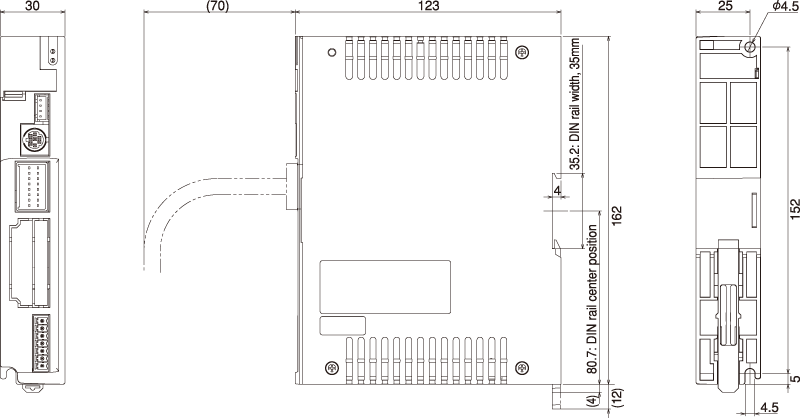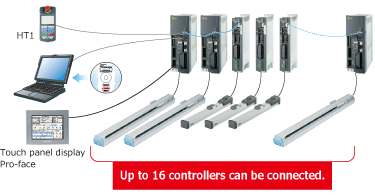Single axis robot positioner TS-SH
Robot positioner dedicated to TRANSERVO
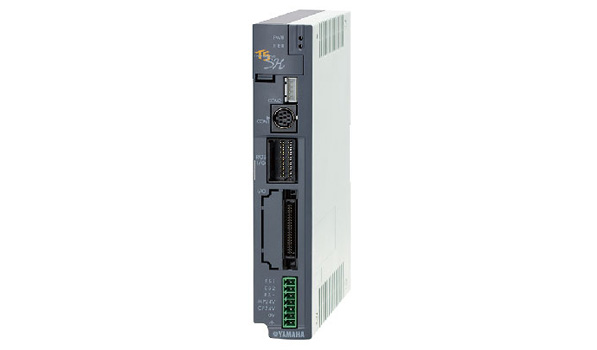 |
TS-SH -Operating method : I/O point tracing / Remote command |
Feature
1. Available for all TRANSERVO series models.

2. Main operation patterns
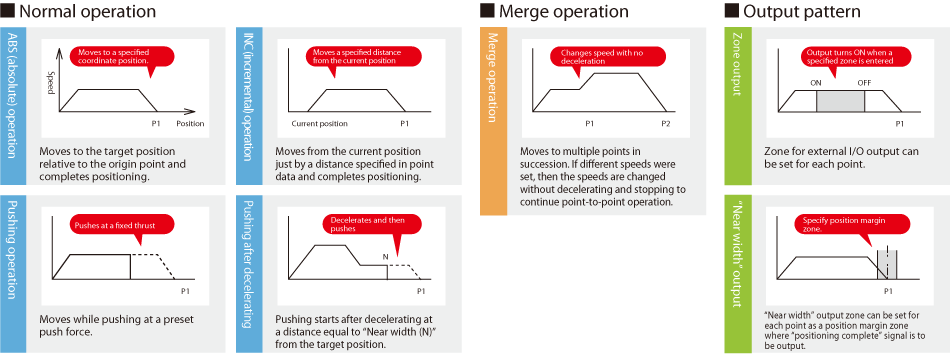
3. Detailed data can be set for each point
Settings such as acceleration, deceleration, zone output range, and position margin zone can be set for each point. Different operations can be easily specified by combining these settings with the above operation patterns.
| Setting items | ||
| Setting item | Description | |
| 1 | Run type | Specifies operation pattern such as ABS, INC, positioning, push, and point-to-point link. |
| 2 | Position | Specifies position or distance to move. |
| 3 | Speed | Specifies maximum speed during operation. |
| 4 | Accel. | Specifies acceleration during operation. |
| 5 | Decel. | Specifies deceleration during operation (Percentage of acceleration) |
| 6 | Push | Specifies motor current limitation during pushing operation. |
| 7 | Zone (−) | Specifies upper and lower limits of "personal zone" for each point data. |
| 8 | Zone (+) | |
| 9 | Near width | Specifies position margin zone where "near width" output should turn on. |
| 10 | Jump | Specifies next movement destination after positioning or linked destination for point-to-point operation. |
| 11 | Flag | Specifies stop mode and others. |
*Acceleration and deceleration can be set in easy-to-understand percentage (%) units (standard setup) or in SI units (custom setup) which make it easy to calculate the cycle time.
4. Maximum acceleration auto setting
Acceleration is a critical parameter that determines how long the robot can continue operating (or service life). In worst cases, setting the acceleration too high may cause the robot to breakdown after a short time.
On the TS series, the maximum acceleration is finely set by taking into account the service life span of the motor output and the guide for each robot model and payload. This eliminates any worry about setting the acceleration too high by mistake.
5. Applicable to EtherNet/IP.
Select from the following I/O types to match the host controller specifications. All hardware is built into the positioner unit so cabling and wire hookups are easy.
| Item | Description |
|---|---|
| NPN | Input: 16 points, 24VDC +/- 10%, 5.1mA/point, positive common Output: 16 points, 24VDC +/- 10%, 50mA/point, sink type |
| PNP | Input: 16 points, 24VDC +/- 10%, 5.1mA/point, negative common Output: 16 points, 24VDC +/- 10%, 50mA/point, source type |
| CC-Link | Supports CC-Link Ver. 1.10, remote device station (1 station) |
| DeviceNet | DeviceNet slave node |
| EtherNet/IP* | EtherNet/IP adapter (2 port) |

*EtherNet/IP will be supported from August, 2013.
6. Up to 16 controllers can be connected. (Daisy chain function)
As the TS series controllers are connected through the daisy chain, the data designing or monitoring of a desired controller can be made through one personal computer or handy terminal.
Since the daisy chain is applicable to not only "TS-S2" and "TS-SD" dedicated to the TRANSERVO, but also "TS-X" and "TS-P" applicable to higher-grade models, it can be connected to all YAMAHA single axis robots. This is very convenient when many more robots are used.
*"TS-SD" cannot use the HT1 and touch panel display "Pro-face".
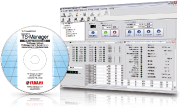

Various monitor functions and detailed error logs
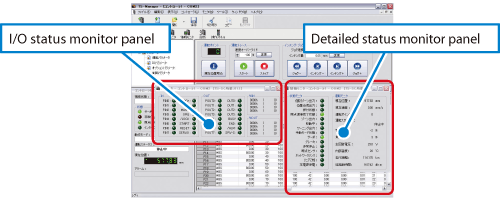
Operation simulation
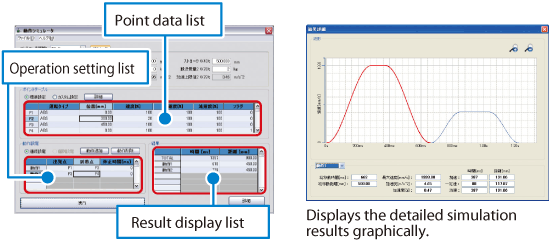
Specifications
| Controllable robot | TRANSERVO series |
| Consumption current | Rating 3.5A (Max. 6.5A) |
| Dimensions | W30 x H162 x D123mm |
| Main unit weight | Approx. 0.3kg |
| Control power supply | DC24V +/-10% |
| Main power supply | DC24V +/-10% |
| Control method | Closed loop vector control method |
| Position detection method | Resolver with multi-turn absolute function (resolution: 20480 P/r)* |
| Operation method | Positioning operation by specifying point number, direct positioning command |
| Operation type | Positioning operation, positioning linked operation, pushing operation, jog operation |
| Number of points | 255 points |
| Point type setting | (1) Standard setting: Set a ratio (%) to the maximum level for the speed or acceleration. (2) Custom setting: Set the speed or acceleration in the SI unit sy stem. |
| Point teaching method | Manual data input (coordinate value input), teaching, direct teaching |
| I/O interface | Select a desired interface from NPN, PNP, CC-Link, DeviceNet, and EtherNet/IP. |
| Input | Servo ON (SERVO), reset (RESET), start (START), interlock (/LOCK), return-to-origin (ORG), manual mode (MANUAL), jig movement - (JOG-), jog movement + (JOG+), point number selection (PIN0 to PIN7) |
| Output | Servo state (SRV-S), alarm (/ALM), operation end (END), operation executing (BUSY), control output (OUT0 to 3), point number output 0 to 7 (POUT0 to POUT7) |
| Communication | RS-232C 1CH |
| Emergency stop circuit | Emergency stop input, emergency stop contact output (1 system: HT1 is used.) |
| Protection function | Position detection error, temperature error, overload, overvoltage, low voltage, excessive position deviation, overcurrent, motor current error, motor faulty wiring, excitation power failure error |
| Operating ambient temperature and humidity | 0 to 40°C, 35 to 85%RH (No dew condensation allowed.) |
| Storage ambient temperature and humidity | -10 to 65°C, 10 to 85%RH (No dew condensation allowed.) |
| Atmosphere | Indoor place where the positioner is not exposed to the direct sunlight. There shall be no corrosive and flammable gas, oil mist, and dust. |
| Vibration resistance | In each of X, Y, and Z directions 10 to 57Hz, half amplitude 0.075mm, 57 to 150Hz, 9.8m/s^2 |
| Absolute backup battery | Lithium battery |
| Absolute backup period | Approx. 1 year (non-energizing state) |
*This value may vary depending on the model.
External View
